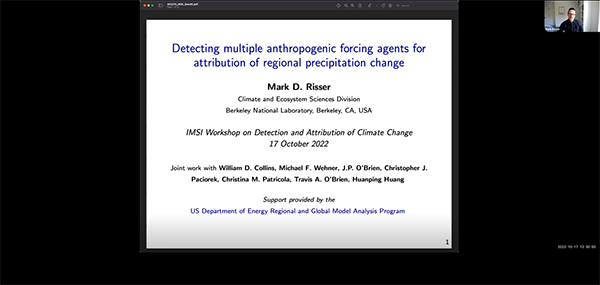Detecting multiple anthropogenic forcing agents for attribution of regional precipitation change
Presenter
October 17, 2022
Abstract
Despite the emerging influence of anthropogenic climate change on the global water cycle, at regional scales the combination of observational uncertainty, large internal variability, and modeling uncertainty undermine robust statements regarding the human influence on mean and extreme precipitation. Here, we propose a novel approach to regional detection and attribution (D&A) for precipitation, starting with the contiguous United States (CONUS) where observational uncertainty is minimized. In a single framework, we are able to simultaneously detect systematic trends in mean and extreme precipitation, attribute trends to anthropogenic forcings, compute the effects of forcings as a function of time, and map the effects of individual forcings. Greenhouse gas emissions increase mean and extreme precipitation from rain gauge measurements across all seasons. Aerosol emissions offset these increases in the winter and spring but appear to enhance rainfall during the summer and fall. Our results show that conflicting literature on trends in precipitation over the historical record can be explained by equal and opposite aerosol and greenhouse gas signals. At the scale of the United States, individual climate models reproduce observed changes due to anthropogenic forcing but cannot confidently determine whether these emissions sources increase or decrease rainfall.
